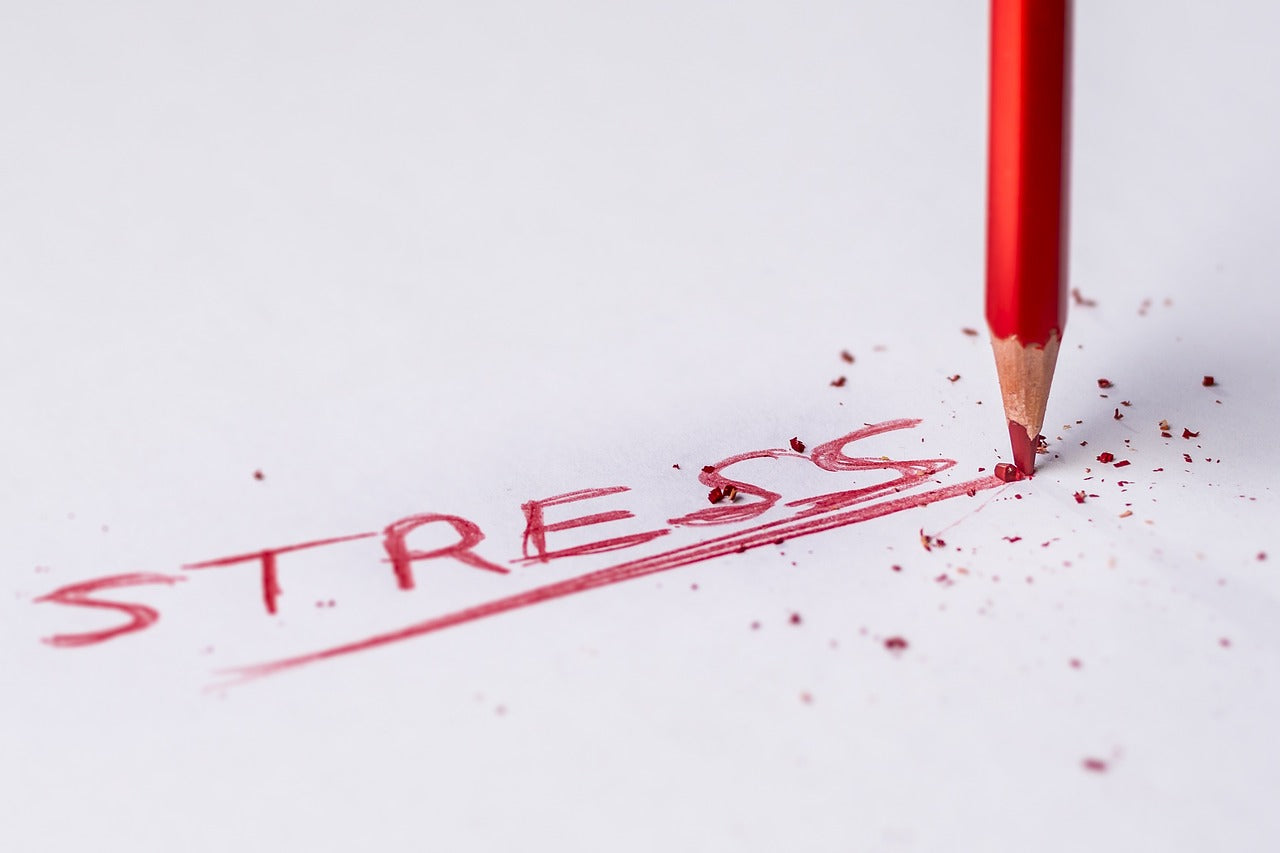
Herbal medicine, the nervous system and the stress response by Dylan Parry BSc Hons. Clinical Herbalism
Introduction
In modern life, we are living in a high-paced society, where there are lots of pressures surrounding us from all angles. This pressure can arise from our jobs, relationships, education, finances, health and the list goes on!
These pressures can create a lot of stress on our mental and physical wellbeing. This can lead to our nervous system becoming overwhelmed and frankly quite frazzled! Burnout is a huge problem currently, as it is a state of emotional, mental and physical exhaustion, which is caused by prolonged or excessive stress. This can cause other systems in our body to become less effective, such as our immune system, as our stress response supresses our immune system and leaves us more susceptible to illness.
Nervous system physiology and the stress response
The combined reactions which we have to stress is known as the “fight or flight” response. It has evolved in humans as a survival mechanism, which helps to enable people to respond quickly to life-threatening situations. These life-threatening situations have usually now been dulled down, as, unlike our ancestors, we are no longer being chased by sabre-toothed tigers!
Now, our life-threatening situations have turned to being stressed when your boss walks over to your desk, or being worried about your massive ‘to do’ list building up etc.
These situations trigger part of our brain known as the amygdala, which interprets images and sounds, e.g. you see your boss walking over to your desk etc. Once the amygdala perceives danger, it quickly sends a distress signal to the hypothalamus. The hypothalamus is an area in the brain which functions similarly to a command centre. The hypothalamus communicates to the rest of the body, via your autonomic nervous system so that you have energy to fight or flight (get away from the danger quickly.)
The autonomic nervous system, is part of your nervous system which controls involuntary functions, such as breathing, blood pressure, heartbeat and the constriction and dilation of bronchioles and arteries.
The autonomic nervous system is made of two parts, the sympathetic nervous system and the parasympathetic nervous system. These two components have two very different roles in the body. The sympathetic nervous system is responsible for the fight or flight response, it takes over when we perceive stress. Whereas the parasympathetic nervous system is responsible for the ‘rest and digest’ response, as it calms the body down once the danger has passed.
Once the amygdala has perceived danger and sent a distress signal to the hypothalamus, the hypothalamus activates the sympathetic nervous system, by sending signals through the autonomic nerves to the adrenal glands. The adrenal glands are located above your kidneys, and they respond to this signal, by releasing epinephrine (adrenaline) into the bloodstream.
As epinephrine circulates around the body, it causes a number of physiological changes, such as increased heart rate, rise in blood pressure, and increased breathing rate, which send increased oxygen to the brain, increasing alertness. Sight, hearing, and other senses also become sharper.
As the initial surge of epinephrine subsides, the hypothalamus stimulates and activates the second half of the stress response system, known as the HPA axis. The HPA axis is made up of the hypothalamus, the pituitary gland and the adrenal glands.
The HPA axis is reliant on a series of hormonal signals to keep the sympathetic nervous system activated. If our brains continue to perceive a threat, the hypothalamus releases corticotropin-releasing hormone (CRH), which goes to the pituitary gland and triggers the release of adrenocorticotropic hormone (ACTH). ACTH then triggers the adrenal glands to release cortisol. This causes the body to stay alert and tense, ready to spring into action. When the threat passes, the cortisol levels drop and the parasympathetic nervous system then dampens the stress response.
Herbs for your nervous system:
Here we shall discuss herbs which are easy to find and use to make lovely and calming herbal teas!
These herbs are primarily calming, to help to sedate your nervous system and reduce its anxious response, which is usually active in times of stress.
Holy basil/ Tulsi ~ Ocimum tenuiflorum

This herb is native and sacred to India. Within Ayurveda, Tulsi is known as ‘The Queen of Herbs’, ‘The Incomparable One’ and is also known as ‘The Elixir of Life’ for both its medicinal and spiritual properties. Tulsi is also adaptogenic, which means that it can help the body build resilience to internal and external stressors. Tulsi has been shown to support both the sympathetic and parasympathetic nervous systems, which can help to create a feeling of balance and calmness. It also may help to reduce the stress response, via reducing the levels of cortisol being released by the adrenal glands which can help to reduce adrenal fatigue or burn out.
Holy basil is an aromatic herb, due to the volatile oils it contains, which causes it to be warming, uplifting and also stimulating. This stimulating effect can transfer to its ability to stimulate circulation and particularly increase cerebral circulation, which helps to increase cognitive functioning and reduce brain fog.

Many of us commonly think of oats as a breakfast food. The young oat tops of the plant are referred to as milky oat tops. The young and freshly sprouted parts of the plant are rich in vitamins and minerals. Oat tops are high in B vitamins, which support the nervous system by being neuroprotective, helping to maintain the myelin sheath, which is a fatty layer that insulates nerve fibres and helps to speed up nerve signal transmission. B vitamins also help with neurotransmitter synthesis. All these actions help to support healthy nervous system functioning and emotional regulation. Oats are a nourishing, relaxing, yet uplifting herb for the nervous system and are often quite comforting. Milky oat tops are classed in herbal medicine as a nervous trophorestorative, which means they nourish, strengthen and restore the nervous system, which helps to calm the stress response and helps in cases of burnout.
Lavandula angustifolia ~ Lavender

This fragrant smelling member of the mint family is commonly grown in gardens for its attractive purple colour, as well as its calming and soothing aroma. Lavender gets its smell from the volatile oils it contains and these volatile oils, primarily linalool and linalyl acetate, may produce an anxiolytic effect via interacting with serotonin receptors. This helps the serotonin to work more effectively and exerts a mood-lifting and calming effect on the brain. Lavender has also been shown to increase parasympathetic tone, which can help shift your body into relaxation mode more easily, which can help to slow heart and breath, whilst helping to calm the mind. Lavender is a great gentle sedative herb, which helps to balance the nervous system when the sympathetic nervous system has taken over.
Chamomile ~ Matricaria chamomilla

This herb is especially great if your anxiousness or stress affects your stomach. People often get stressed and hold tension in their tummy, for example, they experience crampy pains when nervous. Chamomile contains volatile oils, which interact with the smooth muscle of the stomach and helps to ease the tension.
Chamomile is a sedative, and it has been shown to interact with benzodiazepine receptors in the brain, which can cause a calming and sedate feeling in the body. This makes this herb excellent for cases of restlessness and insomnia.
Conclusion:
There are so many different herbs out there that can help your nervous system, adaptogens are another group which can help you to cope with stress. However, for this article I focused on sedatives, as sometimes you just need to calm the fiery engine that is causing the train to shoot straight ahead at full blast. A gentle sedative can slowly help to relax the body and then adaptogens can be brought in; after assessing what level of depletion the nervous system and the rest of the body is experiencing. A majority of adaptogens can be quite stimulating and therefore, I would suggest that you seek practitioner advice and do your research!
One of my future blogs will be about adaptogens, so keep posted!
As always, these blogs are for general information, and certain herbs may not suit everyone. Therefore, I would advise you to seek the advice of a practitioner, if you are taking any medications, have underlying health conditions or under 12 years of age. Thank you!
Reference list
Calderón‐Ospina, C.A. and Nava‐Mesa, M.O. (2019). B Vitamins in the nervous system: Current knowledge of the biochemical modes of action and synergies of thiamine, pyridoxine, and cobalamin. CNS Neuroscience & Therapeutics, [online] 26(1), pp.5–13. Available at: https://www.ncbi.nlm.nih.gov/pmc/articles/PMC6930825/.
Cohen, M.M. (2014). Tulsi - Ocimum sanctum: a Herb for All Reasons. Journal of Ayurveda and Integrative Medicine, [online] 5(4), p.251. Available at: https://doi.org/10.4103/0975-9476.146554.
Donelli, D., Antonelli, M., Bellinazzi, C., Gensini, G.F. and Firenzuoli, F. (2019). Effects of lavender on anxiety: A systematic review and meta-analysis. Phytomedicine, [online] 65, p.153099. Available at: https://doi.org/10.1016/j.phymed.2019.153099.
Hieu, T.H., Dibas, M., Surya Dila, K.A., Sherif, N.A., Hashmi, M.U., Mahmoud, M., Trang, N.T.T., Abdullah, L., Nghia, T.L.B., Y, M.N., Hirayama, K. and Huy, N.T. (2019). Therapeutic efficacy and safety of chamomile for state anxiety, generalized anxiety disorder, insomnia, and sleep quality: A systematic review and meta-analysis of randomized trials and quasi-randomized trials. Phytotherapy research: PTR, [online] 33(6), pp.1604–1615. Available at: https://doi.org/10.1002/ptr.6349.
Kennedy, D.O., Bonnländer, B., Lang, S.C., Pischel, I., Forster, J., Khan, J., Jackson, P.A. and Wightman, E.L. (2020). Acute and Chronic Effects of Green Oat (Avena sativa) Extract on Cognitive Function and Mood during a Laboratory Stressor in Healthy Adults: A Randomised, Double-Blind, Placebo-Controlled Study in Healthy Humans. Nutrients, 12(6), p.1598. Available at: https://doi.org/10.3390/nu12061598.
LeWine, H.E. (2024). Understanding the Stress Response. [online] Harvard Health. Available at: https://www.health.harvard.edu/staying-healthy/understanding-the-stress-response.
Singh, D. and Chaudhuri, P.K. (2018). A review on phytochemical and pharmacological properties of Holy basil (Ocimum sanctum L.). Industrial Crops and Products, 118, pp.367–382. Available at: https://doi.org/10.1016/j.indcrop.2018.03.048.
